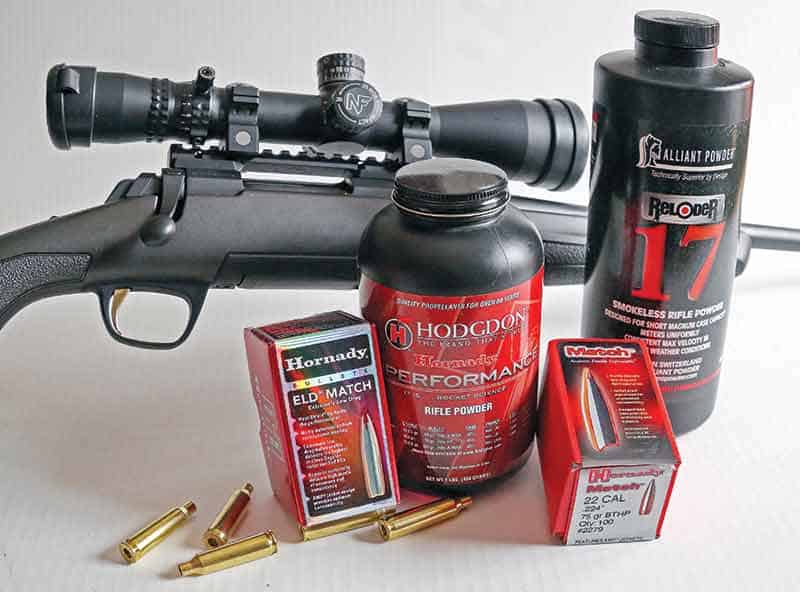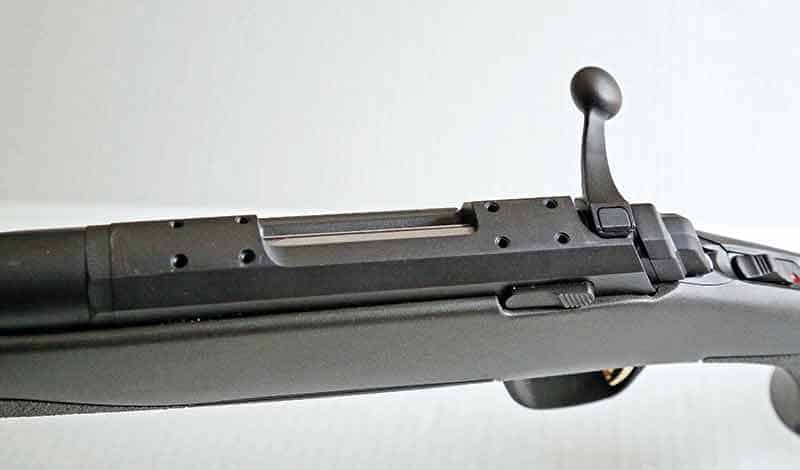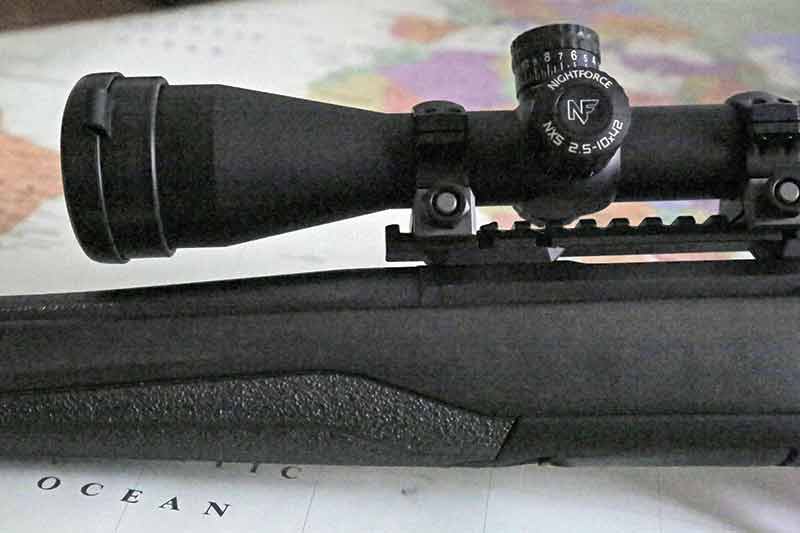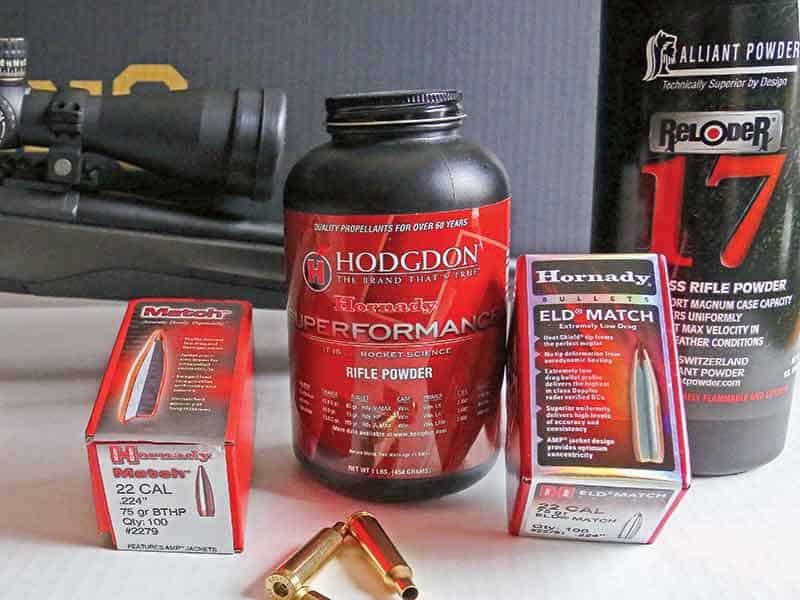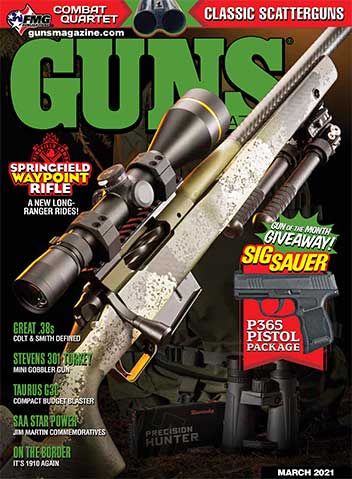The .22-250
Not popular, but still effective
Big-case .22 centerfires such as the .220 Swift, .22-250 Rem. and .223 WSSM aren’t in big demand at present. Medium-capacity cases are most popular, especially the .223 Rem. that has just steamrolled the competition. If anything, the trend has been to even smaller capacity cases and smaller bores such as the .221 Fireball, .204 Ruger, .17 Hornet. I have to admit my .22-250 and .220 Swift rifles haven’t seen much use in recent years.
Twist Is The Key
I see a future for big-case .22s in hunting for game such as deer, antelope and feral pigs. Innovations in bullet technology have resulted in 0.224″ bullets with higher ballistic coefficients and stronger construction, making them very capable deer/antelope cartridges, ideal for light rifles with light recoil. I like 75-grain bullets as a good compromise of velocity, ballistic coefficient and terminal performance on game. Such bullets require a fast twist if they are to stabilize, especially at the colder temperatures often encountered when hunting deer. A 1:9 twist is about the minimum acceptable, a 1:8 or faster is preferable for use in cold temperatures with heavier bullets.
Of course one can always order a custom barrel with whatever twist you desire but I am more interested in what’s available from manufacturers. There are a few factory rifles in .223 with 1:8 and 1:9 twists but the pickings in .22-250 are slim. Looking around on the Internet I can find models with 1:14, 1:12 and 1:10 twists. I believe Tikka made a small run of T3x .22-250s with 1:8 twist on special order but these are not shown on the Tikka web site. I know of no 1:8 twist .22-250 rifles in current production and only one in 1:9, the Browning X-Bolt.
Browning Beauty
The X-Bolt shown here is a Composite Stalker model I bought at a local gun shop. The X-Bolt has been a very successful model for Browning and deservedly so. The rifle is very well designed, made with excellent workmanship from high quality materials. It is accurate, easy to shoot well and has been completely reliable.
The X-Bolt has three locking lugs with a short 60-degree bolt lift. The detachable magazine is a rotary style with a single position straight-line feed for smooth cartridge feeding. It is made of some sort of very tough synthetic and feels as though you could drive over it without damaging it. Browning barrels are highly regarded for their smoothness and accuracy. I like the four screws per scope base and the soft recoil pad — not really needed on a .22-250 but nice to have on the .300 and .338 Win. Mag. models.
My only criticisms of the rifle are purely personal aesthetics. I don’t care for the gold-plated trigger or the Browning buck head logo on the underside of the trigger guard. Browning has gone to a lot of effort to make the logo instantly recognizable — I guess I’m jaded. I remember a northern fishing trip where every second pickup had the Browning logo on the rear window, and every second person was wearing a buck’s head cap.
Loads
All my shooting was done with handloads using .22-250 Hornady brass and two 75-grain Hornady bullets — the BTHP at 0.981″ long and the plastic-tip ELD-M measuring 1.121” overall. The loads I used came right out of the Hornady #10 manual, working up to the maximum listed, 37.9-grain Alliant RL-17 rated at 3,300 fps, and 41.0-grain Hodgdon Superperformance at 3,350 fps. The Hornady velocities were taken in 24″ barrels. In the 22″ barrel of my rifle the Oehler 33 chronograph showed 3,220 fps with RL-17 and 3,255 with Superperformance.
A gripe I have with this, and most rifles, is they can’t seem to get barrel twist, barrel throating, and magazine length all working together. The 1:9 twist is acceptable — depending on bullet profile, the barrel throat will allow a cartridge overall length of 2.500″ to 2.600″. But to fit the magazine, maximum overall cartridge length is limited to 2.388″. The 75-grain bullets must be fairly deep-seated and then they have to jump as much as 0.21″ to reach the rifling. I don’t consider this a deal-breaker as the accuracy was excellent. Some handloaders like a bit of free bullet travel to reduce peak pressure. I just like having the option to seat bullets out to the rifling and still having them fit the magazine.
Both bullets stabilized in the 1:9 twist shooting in temperatures of around 50 degrees F. According to the online JBM stability calculator the longer ELD-M bullet becomes only marginally stable at a temperature of 0 degrees F. Which is why, come deer season, I’ll be using the Hornady 75-grain BTHP at 3,200+ fps.
